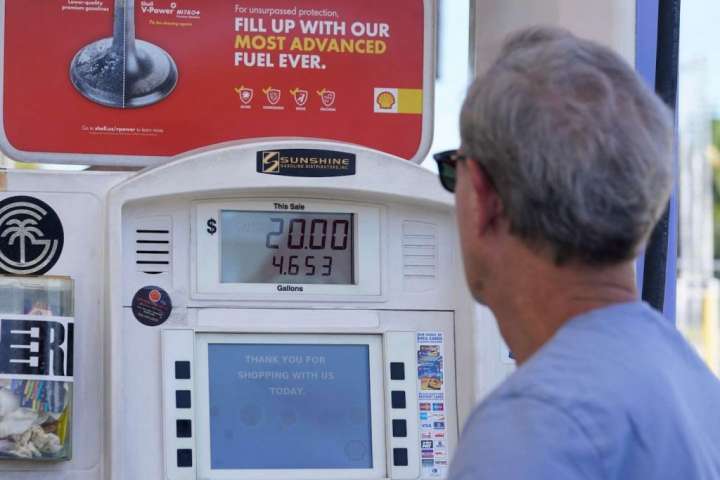Not too long ago in some parts of the United States, paying more than $4 for a gallon of gas was seen as a coastal problem faced by Americans in pricey big cities. But now, for the first time, the average price for a gallon of gas has surpassed $4 in all 50 states.
Gas prices pass $4 per gallon in every U.S. state for the first time

While the national average price has been hovering at or above $4 for weeks, Georgia, Kansas and Oklahoma had yet to cross the mark, according to data tracked by AAA.
But they joined the rest of the United States this week, with a gallon of gas in Oklahoma costing about $4.01 on average Tuesday, according to the AAA figures. That’s far below the average for a gallon of gas in California, which was $6.02. In Georgia, it was $4.06, and in Kansas, it was just over $4.
Nationally, the average cost for a gallon of gas was $4.52 on Tuesday. In addition to California, Washington state, Oregon, Nevada, Alaska and Hawaii all had prices averaging more than $5 on Tuesday.
Severin Borenstein, an economics professor at the University of California at Berkeley whose research focuses on energy pricing, said that while the prices are “coming as a real shock” for Americans, he was not surprised by the milestone, adding that “with high crude oil prices, constrained refineries, and strong demand as the economy comes back, it’s no surprise that we have hit these levels.”
Borenstein noted that rising gas prices are a “substantial hardship” for low-income drivers particularly, adding to a list of economic challenges, including medical costs and rising rents.
Last week, the national average price of gas hit a record amid highflying inflation and turbulence in gas and oil markets, in part because of the war in Ukraine.
Prices are even higher at pumps along the highway, according to data from the federal Energy Information Administration: In every region in the United States, it costs more than $5 per gallon to fill up near a highway. (The national highway gas price average is $5.61, up $2.36 from a year ago.)
Still, when adjusted for inflation, prices were actually higher in the summer of 2008, said Erich Muehlegger, an economics professor at the University of California at Davis, whose research focuses on energy and consumer behavior. He added that summer — “driving season” — tends to bring increased demand for gas and oil, pushing prices up.
President Biden has sought to address the issue, saying in recent days that inflation is among his top priorities — though he’s juggling a variety of crises, including a baby formula shortage, the aftermath of the country’s latest racist mass shooting, and Russia’s war on Ukraine.
Borenstein said that while oil prices are hard to predict, oil futures markets indicate that the next year could see lower prices. In the meantime, he said, policymakers “should try to explain what is going on rather than create convenient scapegoats or push their own energy agendas.”
Muehlegger added that policymakers have few options available to lower prices in the short term, though some have tried; he noted that gas taxes have been cut in some states and that House Democrats are pushing legislation to prohibit price gouging. But oil prices are largely driven by global supply and demand, limiting the effect of such efforts.






